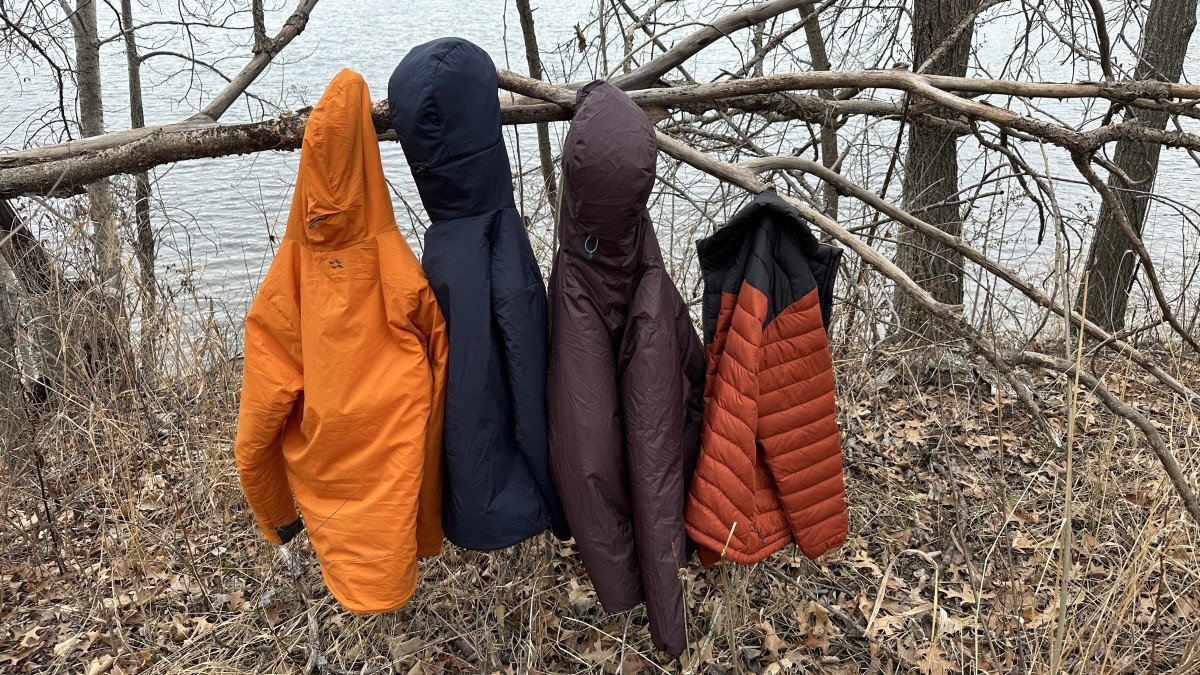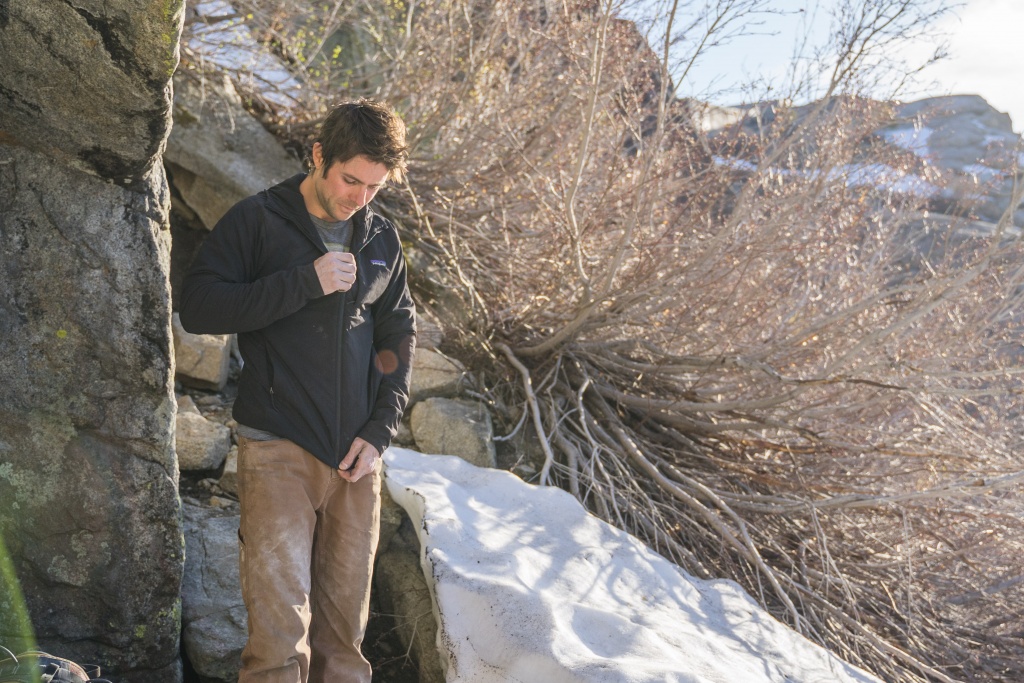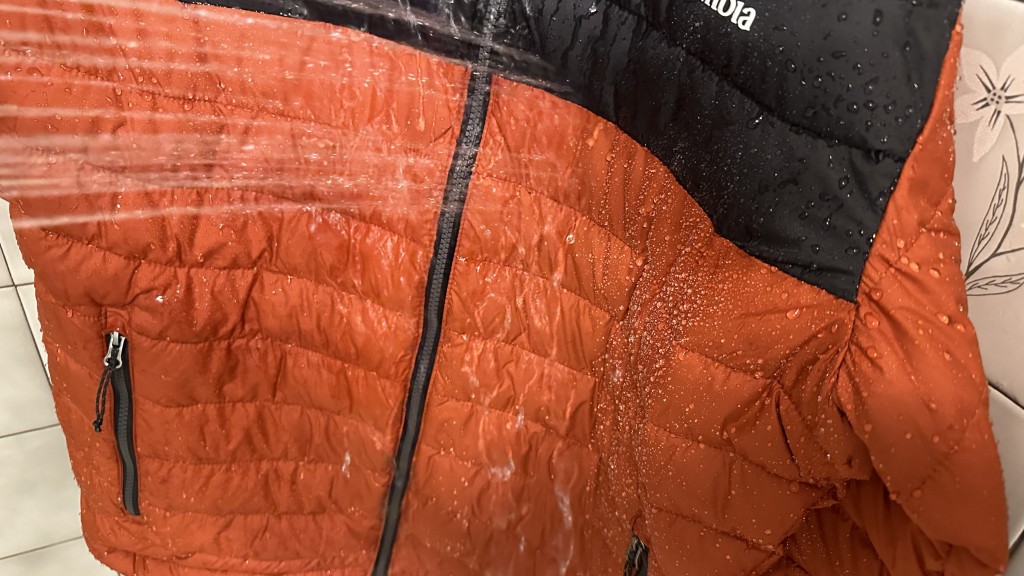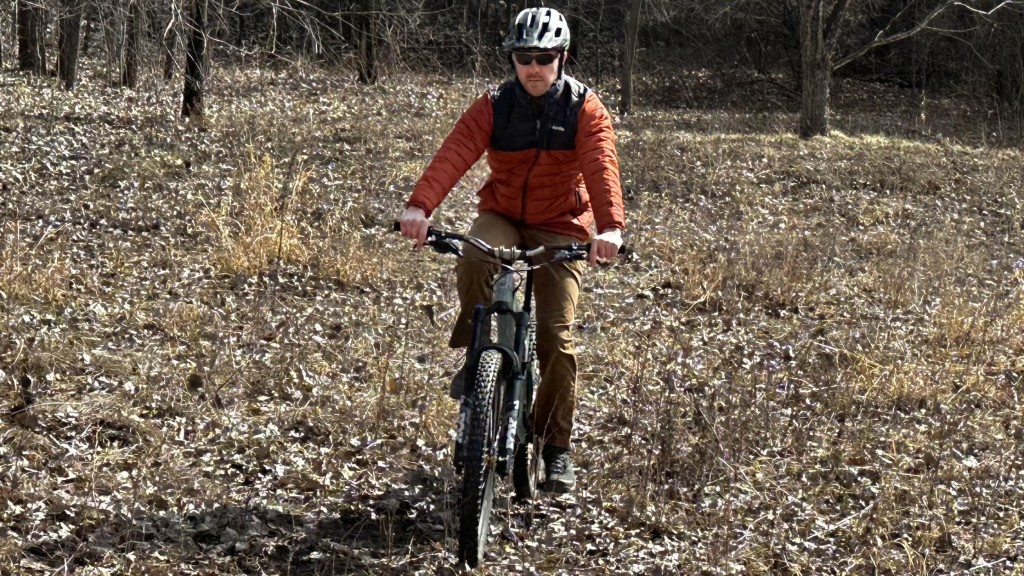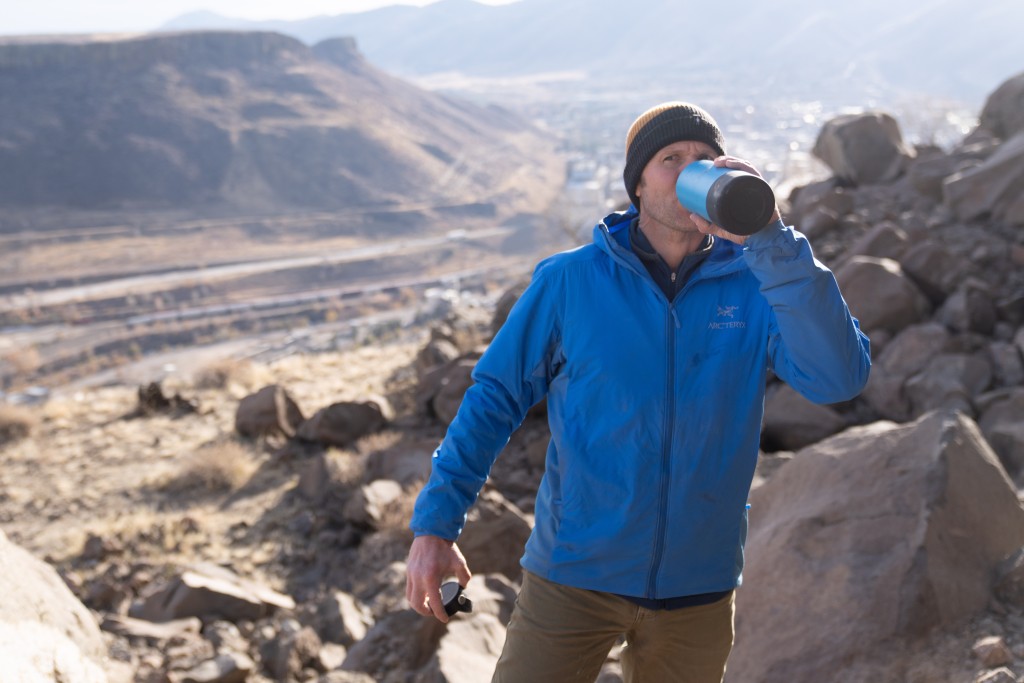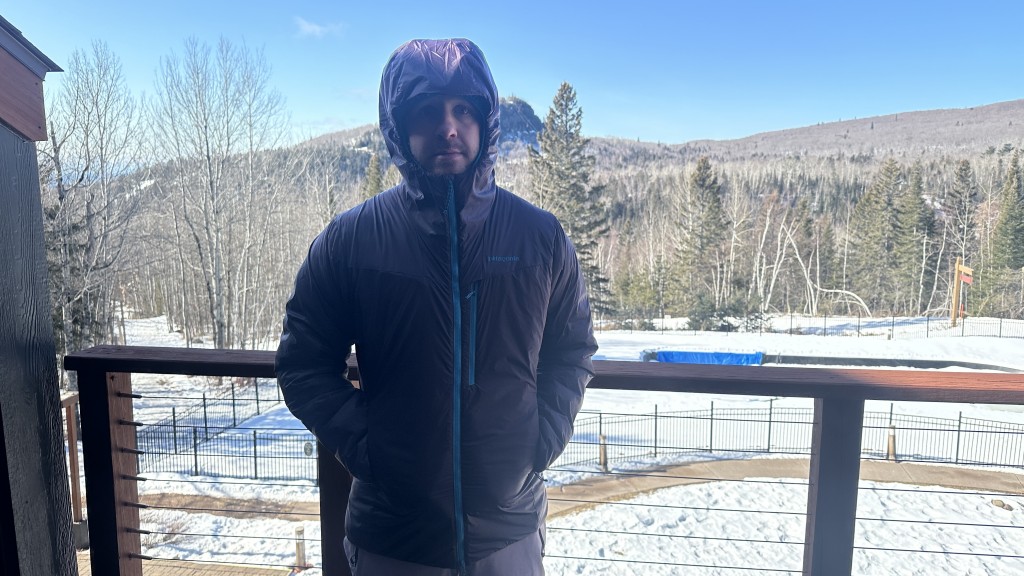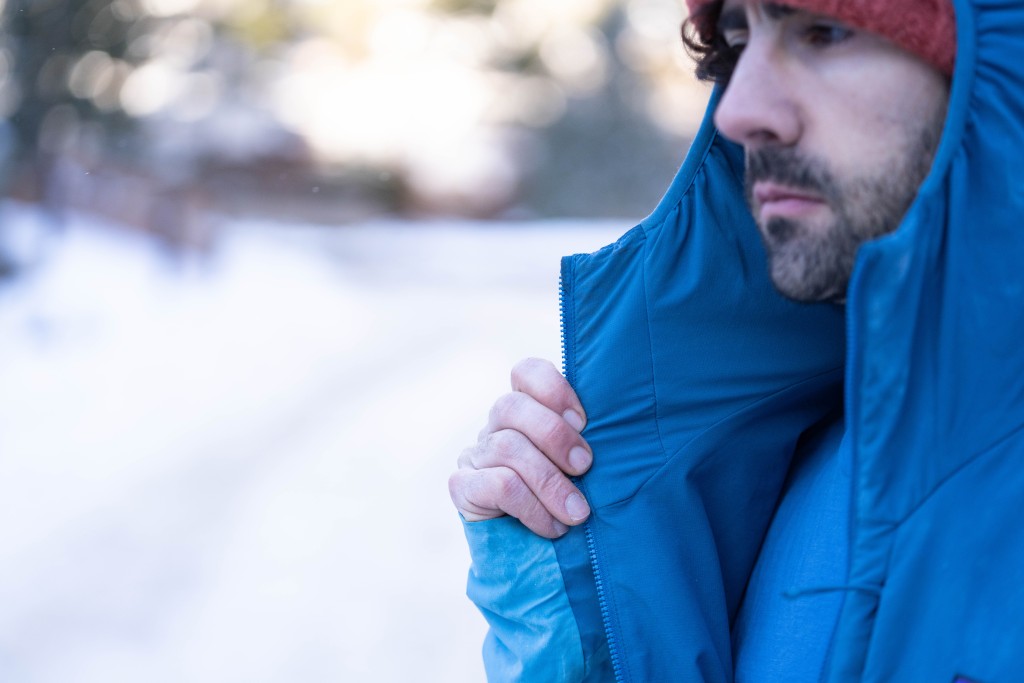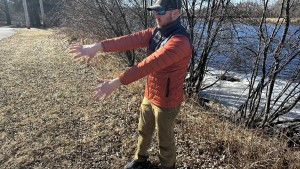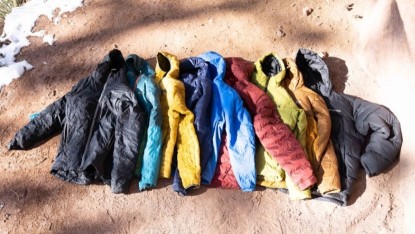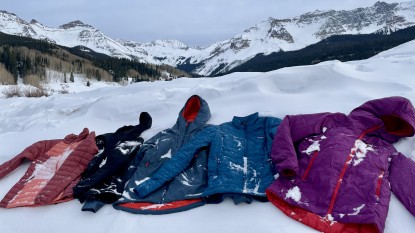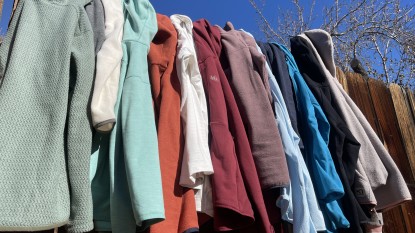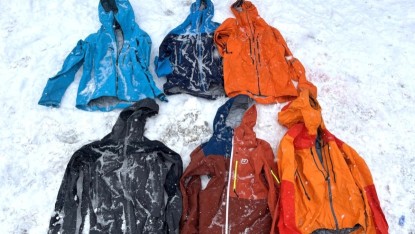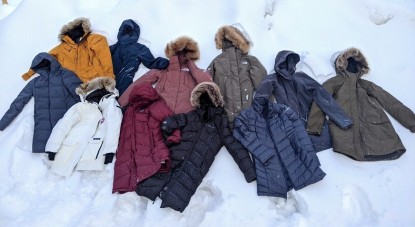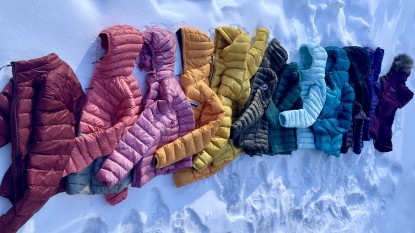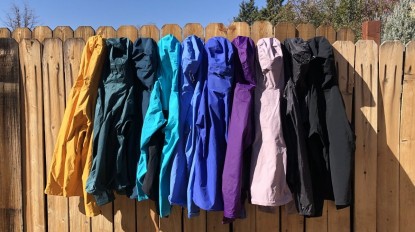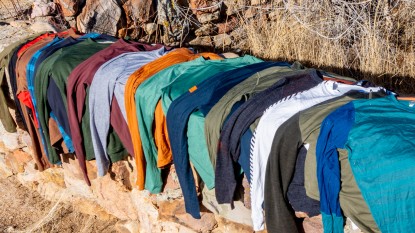What is the best type of insulated jacket to suit your needs? Our comprehensive buying advice is here to help you answer that question and be better informed when making a purchase. The synthetic insulated jackets in our review offer a great alternative to down, but some are made for activities and breathability, while others are made for maximum warmth. This article will explain what makes the jackets different based on their intended use and help you identify which ones will help keep you more comfortable in the outdoors.
Synthetic Insulation vs. Down
One of the first decisions to make when looking at jackets is goose down or synthetic insulation. Each type of insulation behaves differently and has its own benefits and pitfalls. Down insulation is desired for the lightweight and compressible nature that insulates better than the synthetics when comparing weight to warmth ratio. The weakness of down, however, is moisture. When down insulation gets wet it loses the loftiness that gives it the ability to retain heat. Some down products are treated to be more water resistant, but heavy rain or submersion will still soak through. Synthetic insulation is made from several types of polyester in different strand lengths and offers a durable and hypoallergenic alternative to down. Though it may not be quite as warm as down, synthetic insulation maintains the ability to keep you warm when wet and dries quickly, an important consideration if moisture is a regular concern.
Quality down tends to maintain its loft and warmth through years of abuse, while synthetic fibers do not fare as well. Down compresses to a smaller package, and synthetic polyester fibers don't tend to compress quite as well. Keep in mind that keeping any product in a compressed state is not recommended and can cause permanent damage. Mother nature may still have the upper hand for durability, but as synthetic materials advance, they have been closing the gap on down and offer comparable results at a more affordable price.
Deciding what layer the jacket will be used for can also help determine the type of insulation to choose. Down products can lose their loft when squished between the body and outer layer, causing it to be a less effective insulator. Synthetic insulation makes a good midlayer since it can absorb sweat and retain warmth, is more breathable, and is quick to dry and move moisture away from the body. Speaking of breathability, synthetic jackets work well as an active outer layer when you need to put in the work, but not be left sweaty and cold afterward.
When choosing a jacket for an outer layer, down and synthetics have compelling advantages for different environments. For use in cold, dry environments or when portability is key, the warmth-to-weight advantage of down is a desirable choice. If there is potential for wet conditions like rain or snow melt, synthetics will be the better choice and faster drying than the down counterpart. Another thing to consider with an insulated jacket is the cleaning of the product. Down insulation can be damaged by an agitator in the washing machine and can require specific cleaners to be used to prevent stripping the feathers of natural oils. Synthetic jackets can be washed on a normal cycle and tumble-dried to restore the DWR finish.
Every year, new technology and innovations are brought to the market for both down and synthetic insulation, which attempts to close the gap between the two competitors. As new polyester fibers are created to be as warm and compressible as down, companies are testing hydrophobic coatings to make down insulation more water-resistant and fast-drying like the synthetics. If you are frequently getting dirty on your adventures, you should consider cleaning and maintenance when choosing a product.
Down Insulation
Synthetic Insulation
Types of Synthetic Insulation
The jackets we tested utilize multiple types of synthetic insulating fibers in various lengths and thicknesses that are mainly polyester. Combining multiple thicknesses and lengths of fiber in varying percentages is a popular strategy to increase performance. The length, size, and number of fibers can change the way the jacket performs under different conditions. Some brands use very thin fibers to create air pockets that trap heat and are more compressible. Other manufacturers choose variable-thickness fibers to improve durability and moisture absorption or pick fibers that impact the breathability and comfort of the jacket for high-output activities. We could list all the types of synthetic insulation, but each brand has its own name and claims for its products, and regular advancements in technology make this an ever-changing field.
When choosing a jacket, you should consider where you want most of the insulation to be focused. The fill can be placed in different areas of the jacket, like the torso, arms, hood, and pockets, which impacts the protection it offers. Along the warmth continuum, there are thin pieces built with 40 g/m2 insulating fibers for cooler days and models with upwards of 200 g/m2 insulation for warmth and wind resistance on those frigid days. Some designs focus on breathability and comfort for high-energy activities, while others focus on maximizing warmth and weather resistance.
What Do Those Weights Mean?
Unlike down insulation, which incorporates a fill rating, comparing the loft and resultant warmth of synthetic insulation can be quite difficult. That is why we perform real-world testing in cool to cold conditions to find what insulation is warmer than others in practice. The grams per square meter measurement simply states the weight of the insulation used but does not measure loft and warmth. 60 g/m2 of one brand of insulation may deliver more loft and warmth than 60 g/m2 of a competitor's brand.
Lightweight and High Breathability
Many brands now offer lightly insulated jackets whose insulation and design features are engineered for breathability on high energy efforts. These insulation types increase your comfort during heavy exertion by improving airflow, wicking moisture, and stretching more than traditional synthetics. They can be used as an outer layer when you are working hard in cooler temps, but also make for an excellent mid-layer when you need extra warmth but don't want to continually have to take a jacket off and on. Manufactured with highly air-permeable fabrics to increase breathability, which means the wind can pass through, but a windbreaker or shell can easily solve that problem.
Lightweight and Hybrid Construction
Lightweight jackets that use traditional synthetic insulation and shell fabrics don't usually breathe well, but hybrids add thin, stretchy, and breathable fabric in critical areas to allow for ventilation. These jackets have features that focus on insulation and wind resistance in areas like the chest, back, and arms while promoting breathability in areas like the sides or underarm regions. We found this style to be very comfortable and versatile for many of the activities we encountered and offered improved mobility with the stretch fabrics. As an outer layer, these jackets keep your core warm and protected while allowing excess heat and moisture to escape through the breathable panels.
Weather Resistant Insulated Jackets
Another type of synthetic jacket you will find offers light to heavy insulation with a less permeable shell to protect you from mother nature. These jackets are meant to be wind and water-resistant and keep you warm when encountering more harsh environments. Since these models block the wind and rain, they won't offer the same breathability as other options and may not work as well for high-output activities.
What Will Meet Your Needs?
Once you've determined that a synthetic insulated jacket is what you desire, there are a few questions to help you narrow the field and determine what jacket will work best for you. Try to focus on the primary use and specific needs when you are making your decision. Will you be using this jacket for specific activities in certain conditions, or will it be more of a universal layer for cooler temperatures?
How Much Insulation?
Consider the type of weather and environment you will most encounter and what your layering system entails. Do you expect predictable, consistent temperatures through the day or drastic swings from morning until night? For many activities like hiking, backpacking, skiing, or climbing, people will combine a light or medium insulated jacket with a hardshell or one of our favorite rain jackets for colder weather. High-output activities where you continuously sweat will require breathable, lightweight insulation, while standing still will require a much heavier jacket on those cold days. If you are the type of person with a more stop-and-go approach and likes to enjoy the scenery, maybe a midweight would keep you most comfortable on your treks.
Breathable or Weather Resistant?
Determine the types of activities you will be doing and what you expect from your outer layer. A highly breathable model will work well for someone working hard and generating a lot of sweat. These fabrics allow excess heat and moisture to escape, preventing you from becoming soaked and chilled. They are convenient since they regulate temperature without playing the off-and-on game, but they won't protect you from the wind and rain. If you plan on being exposed to areas with wind chills and rain or snow, you should choose a jacket with a wind and water-resistant shell to keep you comfortable and dry.
Hood or No Hood?
When asked, the majority of our friends and testers wanted a hood on their jacket. We feel it's better to have and not need it than need and not have it, especially when it comes to being cold and wet. A hood adds significant warmth and protection without adding too much weight, offers neck protection, and can't be misplaced or fall off like a hat. Some of the jackets we tested had insulated hoods, which kept our heads warmer, while others only acted as a shell from the wind and rain. If activities require head protection, make sure to find a helmet-compatible hood. If you are worried about bulk with layering or the hood getting in the way, many of the jackets we tested are available without a hood.
Stowing
Some folks really want a jacket that stows in its own pocket or includes a stuff sack for easy storage and carrying. A stowable jacket can be convenient when you need to save space or want to carry it on your pack or harness for easy access when hiking or climbing. Some jackets we tested had a built-in stow pocket but were quite difficult to compress and zip closed. As previously stated, leaving a jacket compressed for long periods of time can damage the material and negatively impact the performance.
Layering & Sizing
It's common to wear a lightly insulated jacket as a stand-alone layer when it's chilly and clear and to add a waterproof/breathable shell over the top if the weather turns nasty. A lightly insulated jacket typically doubles as a mid-layer and should be sized to fit close to the body and under your preferred shell. A heavier insulated jacket with wind and water resistance usually serves as the outer layer and should be sized to fit over your other clothing. Be sure to examine the arm and hem length with movement, as some models tend to ride up more than others when moving about.
Care of Insulated Jackets
If your insulated jacket is a workhorse, then it will get dirty, body oils and sweat will soak in, and dirt and grime will accumulate on the exterior as well. Synthetic insulation is easier to care for than down, but always consult the manufacturer's instructions so you know what to expect. The products we tested had durable water repellant (DWR) treatment on the outer fabric, which can normally be restored by a roll in the dryer on medium heat. The goal is to have the outer fabric resist water while the inner layer moves moisture from the body. You may need to re-apply the DWR treatment after some time to keep it protected, and there are many products on the market, from spray-on to wash-in varieties.
Conclusion
We hope to have simplified selecting an insulated jacket so you can easily find one that fits your needs. Whether you are a long-distance runner looking for a lightweight and breathable option or headed out for groceries in winter and want warmth and wind resistance, our in-depth reviews will provide you with plenty of information to make the right choice.

